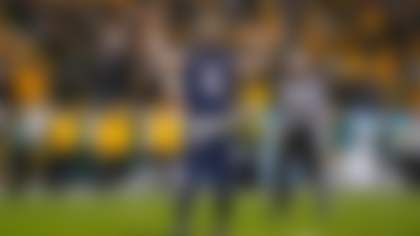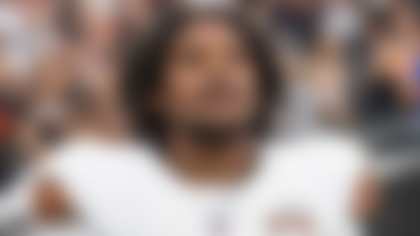NFL owners voted on Tuesday to approve a resolution that allows players to fair catch on kickoffs with the resulting possession beginning at the team's own 25-yard line.
The new rule specifies that the fair catch off a free kick (safety or kickoff) must occur behind the team's 25-yard line in order for the ball to be placed at the 25.
The rule change will be for one year only, with the league citing "player safety" as a reason for its proposal.
"The kickoff play for us has been a play that has had a lot of changes for us over the years, all really driven by health and safety," Rich McKay, chairman of the NFL's competition committee, told NFL Network's Judy Battista. "The concussion rate on the play has gone up. It's gone up because the ball is being returned more by kicks that are being hung inside the 5-yard line. College made this rule change in maybe 2018 or 2019. We looked at their data and said, you know what, this is the right thing to do now."
McKay and NFL executive Jeff Miller said Tuesday that their modeling says the kickoff return rate will decrease from 38% to 31% and the concussion rate will drop 15% due to the approved proposal.
"We needed to do something," McKay added. "We just can't sit there and ignore that data."
Expecting backlash from special teams coaches and other opponents of the change, McKay explained why the league believed adopting the proposal was in its best interest.
"It's never easy for special teams coaches. They've coached it a certain way, they think they have an advantage, so they're not gonna be happy with changes like this," McKay told Battista, "but the changes needed to be made because, in our mind, we have the data that said it should be made."
The rule was initially proposed by the league's competition committee in March to be discussed at the Annual League Meeting as the NFL continues its push to reduce injuries on special teams plays.
The proposal was tabled for further discussion in March. Two months later, ownership voted in its favor at the Spring League Meeting in Minneapolis.
"In our mind this is a rule that needed to be passed," McKay told reporters on Tuesday. "We needed to pass it for one year, see what the data is and consider what the future of the kickoff was. So that was kind of the pathway we took. Doesn't mean that coaches and/or players wouldn't feel negatively about it. I would anticipate they would because change always means you got to look at things differently -- and I get that. But, in our case, we're going to be driven by the health and safety data and that's what's going to inform us as far as making rules proposals."
Below is the agreed-to rule proposal:
For one year only, amend Rule 10, Section 2, Article 4 (Putting Ball in Play After Fair Catch, pg. 42) (new language underlined, deleted language struck through):
ARTICLE 4. PUTTING BALL IN PLAY AFTER FAIR CATCH. After a fair catch is made, or is awarded as the result of fair-catch interference, the receiving team has the option of putting
the ball in play by either a:
- (a) fair-catch kick (drop kick or placekick without a tee) from the spot of the catch (or the succeeding spot after enforcement of any applicable penalties or rule) (3-10 and 11-4-3), or
- (b) snap from the spot of the catch (or the succeeding spot after enforcement of any applicable penalties), unless a player on the receiving team makes a fair catch of a free kick behind the receiving team's 25-yard line, in which case the ball will be put in play at the receiving team's 25-yard line.
Note: A receiver may make or be awarded a fair catch in his end zone. If there is fair-catch interference or illegal contact with the receiver after he has made a fair catch.












